
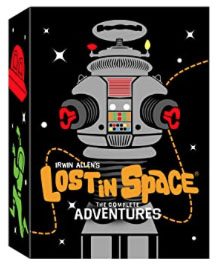
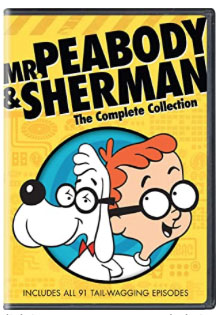
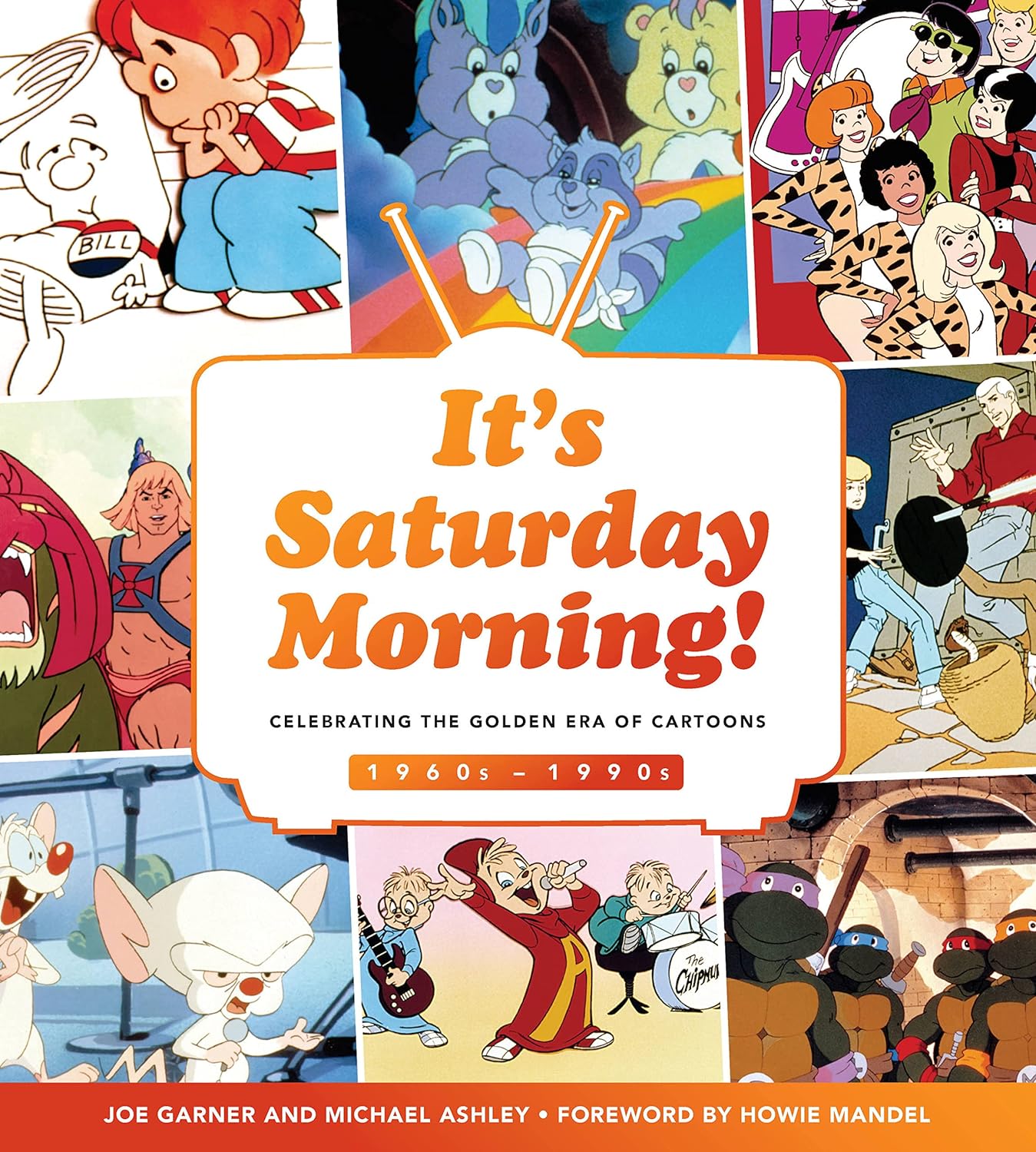
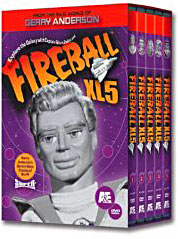
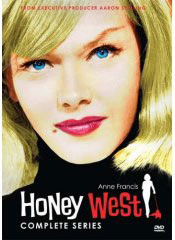

 |
 |
 |
 |
 |
 |
 |
||||||
TV Shows on DVD/ / / / / TV Blog/ / / / / Punk Book/ / / Holiday
Specials on DVD / /
/ / / / Classic
Commercials |
||||||||||||
If you think achieving world peace is hard, try producing a successful TV series. That’s just what the United Nations tried to do in the 1960s, with decidedly mixed results by Mitchell Hadley It was called “one of the most remarkable ventures in television’s history.” A series of six 90-minute programs, produced to mark the 25th anniversary of the United Nations, presented without commercial interruption and featuring the biggest names in the entertainment business, all of whom would appear for little or no fee. The financial backing (to the tune of $4 million) by the Xerox Corporation, one of the most socially conscious companies in American business. A nonprofit organization, the Telsun Foundation (standing for Television Series for the United Nations) created by luminaries such as UN Ambassador Adlai Stevenson especially for the occasion. Cooperation by all three networks, who would share in broadcasting the series. There was no reason not to believe what the hype promised: that this ambitious project would in fact turn out to be a landmark achievement in broadcasting. This is the story of the United Nations and its initial foray into broadcast television. It might be thought of as the most remarkable venture nobody ever heard of. Birth of a Dream The idea started late in 1963, following an incident in which Stevenson was roughed up by extremists in Dallas protesting U.S. involvement in the United Nations. (It was, in fact, this incident which had caused the Secret Service so much concern about President Kennedy’s upcoming trip to Dallas.) Paul Hoffman, managing director of the United Nations Special Fund, concluded that much of American antipathy toward the UN was the result of ignorance regarding the organization’s actual activities. Educate the public, thought Hoffman, and they’ll come away with a greater appreciation for what the UN actually does. Hoffman shared his idea with colleagues, including a public relations man named Edgar Rosenberg. Like all high-powered PR men, Rosenberg thrived on his connections, including ad agency executive Fred Papert, one of whose clients was the Xerox Corporation. Under the leadership of CEO Joseph C. Wilson, Xerox had
become a staunch advocate of corporate social responsibility. According
to Wilson, “a corporation had a duty to support the institutions
which made possible a free, healthy, and educated society.” When
Papert presented Hoffman and Rosenberg’s idea for a UN series to
Xerox, the response was a positive one. Xerox agreed to put up $4 million
in support of the project, and even stipulated that any profit generated
by syndication or foreign sales should go to the UN. Wilson’s support of the UN project was unwavering, despite opposition from some politically conservative stockholders. When one complained of the $4 million price tag for the project, Wilson replied scornfully: "You can sell your stock or try to throw us out, but we are not going to change." Hoffman, Rosenberg and others established the Telsun Foundation as producer of record for the series, and set out to sell their idea. They met with an enthusiastic initial response, as award-winning writers, directors, and stars lined up to appear in the series, despite the fact they would be working for scale. Rosenberg “went on the assumption that if we were able to get commitments from the very best directors and writers, they would be the magnets that would attract leading actors and actresses.” That, he noted, “turned out to be correct.”
Telsun and Xerox made the joint announcement on April 8, 1964. The plan was for six separate programs, to be aired once a month, beginning in January 1965. The shows would each run between 60 and 90 minutes; although we would think of them today as made-for-TV movies, the term had not yet come into use (the first show to be referred to as such was See How They Run, shown in October of 1964), and the programs were generally labeled as “specials” or “dramas.” Carol For Another Christmas, for example, which aired December 28, 1964, was listed in TV Guide as a “Christmas Drama.” However, from the production values to the star power of cast and crew, these were movies all the way. Originally, the intent was to involve all three broadcast networks in the series, with each network broadcasting two of the programs. However, that idea didn’t even make it to the starting line. From Three Networks to One Even before the official announcement, CBS notified Xerox and Telsun that it had no intention of becoming involved. They claimed to be concerned over a comment from a UN representative that “the broadcasts would show the United Nations ‘in some favorable way.’” According to CBS Vice President Richard Salant, that would be a violation of CBS’s policy against programming that served “as a political tract or as propaganda for a particular viewpoint.” In a comment that indicated either political sensitivity or political cowardice on the part of the network, Salant told The New York Times that “most men of goodwill wholly approve of the United Nations,” but “there is, whether we like it or not, a substantial segment of the American population which is opposed to the U.N.” Such opposition groups, it was feared, might demand equal time from the network. Therefore, the April 8 announcement featured a schedule with ABC broadcasting the first two and last two shows and NBC picking up the middle two. (Interestingly enough, CBS claimed that Telsun had originally approached them with the idea of broadcasting all six movies.) It wasn’t long before that too began to fall apart. NBC, undoubtedly hearing the same footsteps as CBS, warned Xerox two days following the formal announcement that “the programs must not contain material soliciting funds or appealing for support of the United Nations.” Furthermore, according to the network’s statement, each movie “must be approved by the NBC program department and must be in the entertainment category rather than documentaries or actuality programs.” Regardless of the situation, NBC told Telsun that it would be impossible for them to air any of the programs any earlier than June, 1965, which would be at least three months after the proposed airdate. In the end, none of the movies were ever aired on NBC; all would run on ratings-starved ABC which, despite a similar policy that programs must “conform to network program continuity policies,” apparently never raised a significant objection to the content. The Birchers Bite Back The main political opposition to the series came from the ultra-conservative John Birch Society, which had a steadfast record of opposition to the United Nations. The Birchers had launched a “Get US out of UN” campaign in 1959, claiming that the "Real nature of [the] UN is to build One World Government (New World Order)." Despite having been read out of the conservative mainstream by William F. Buckley Jr., who said their “views on current affairs are, at so many critical points... so far removed from common sense”, the Birchers retained the potential to create a headache for networks and advertisers alike. Two months after the announcement of the UN series, the Society started a campaign against it, urging their members to write to Xerox protesting their sponsorship. “An avalanche of mail ought to convince them of the unwisdom of their proposed action from a business point of view.” The Society claimed that over 51,000 letters from nearly 13,000 individuals flooded into Xerox headquarters. (Xerox countered that the numbers were actually closer to 25,000 and 5,000 respectively.) The prospect of a massive protest might have intimidated CBS and NBC, but ultimately it was unable to prevent the series from going on the air. Typical of the mainstream public reaction was a letter to TV Guide in which the writer protested “this mail campaign to stop a wonderful series by Xerox on the United Nations... No lunatic fringe of prejudiced, prolific letter writers should decide for the rest of us if the United Nations is to be learned about!” The UN might well be a controversial organization, but it would be one with its own television series. It would be a diminished one, however: while the original April 1964 announcement had boasted of six programs airing monthly, by December of 1964, just before the series premiere, the number had shrunk to five, to be shown “every five or six weeks,” with four on ABC and one on NBC. Regardless of what might have been going on backstage, the series was ready for primetime. Carol for Another Christmas The first and probably best-known program in the series
was Carol for Another Christmas, shown on December 28, 1964.
Loosely based on the Charles Dickens’ classic, it boasted perhaps
the strongest pedigree of all the episodes: written by Serling, directed
by Academy Award winner Mankiewicz (his one and only foray into television),
with music by Mancini, and featuring an all-star cast led by Sellers,
making his first acting appearance since suffering a near-fatal heart
attack. Sellers epitomized the contribution many made for the series,
working for $350 rather than his customary $250,000 fee. Into his unhappy life come three ghosts: Christmas Past, (Steve Lawrence), a World War I doughboy who shows Grudge the need for diplomacy by taking him on a trip to Hiroshima, showing him the ultimate horror of war; Christmas Present (Pat Hingle), an epicurean spirit demonstrating the selfishness of modern man by feasting on fine foods while starving war refugees stare from behind barbed wire; and Christmas Future (Robert Shaw), who takes him to a post-apocalyptic world peopled by a sect of survivors led by Sellers, playing an original character called Imperial Me. Sellers’ character, the greatest departure from Dickens’ story, appears to be a ridiculous character, dressed in cowboy hat and pilgrim collar – but his message is anything but laughable. He parodies Grudge’s isolationism - “Each behind his own barricade! Follow me, my friends and loved ones, to the perfect society! The Civilization of ‘I’!” – with tragic results, as Grudge’s butler (Percy Rodrigues), trying to talk sense, is shot to death for his troubles.
Grudge returns to the present with a changed view, but it is not necessarily the glorious transformation of Dickens’ original. Grudge may concede the need for diplomacy and intervention, but it does not change the fact that the world is a brutal place. The cast in “Carol,” which also included Ben Gazarra as Grudge’s nephew Fred, Eva Marie Saint as a Navy WAVE, and Britt Ekland (Sellers’ then-wife) as one of Imperial Me’s followers, was almost uniformly strong. In particular, the turn by Steve Lawrence, better known for his singing career with his wife Eydie Gormé, came in for critical praise, with Mankiewicz’s son Tom telling the New York Times years later that Lawrence’s portrayal was his father’s favorite. “He only knew Steve as a singer, but he really impressed him as an actor. He thought he was a natural.” Mancini’s score, particularly the theme (available on many Christmas collections) was also praised. Despite this, however, the program itself received mostly negative reviews. Many critics saw the production for what it was – a noble but heavy-handed, preachy, moralizing effort. “Earnest” was the word that popped up often, stated or implied. It was an important project to the cast and crew, perhaps too important - C. O. (Doc) Erickson, production supervisor, remembered that “Joe and Rod were inspired to do it because they felt it was important to do the U.N.’s business and promote it.” According to Erickson, “I thought it was overdone. It was too long, too tiring and beat you over the head too much.” This kind of heavy-handedness was not unique for Serling, who was given to lapsing into what Twilight Zone director Lamont Johnson referred to as “messianic moods.” This often happened when Serling felt strongly about his subject. “Serling has two poles in his writing,” said Marc Scott Zicree, author of The Twilight Zone Companion. “There’s his powerful, human-oriented writing, and his very didactic writing, and ‘Carol’ falls on the didactic side.” Unfortunately for Telsun, in the battle between “message” and “entertainment,” message generally won out, diminishing much of the potential impact of the series. In the meantime the scope of the project was diminishing as well. By February 10, 1965, just over six weeks later, and nine days before the broadcast of the second movie in the series, Telsun announced that it was postponing the remaining three shows until the fall. According to a spokesman for the foundation, the postponement was a result of “filming... consum[ing] more time than originally planned.” Telsun continued to insist that the remainder of the series would come off as planned and that the shows would be filmed on location “in the Middle East, Pakistan, India and Europe” and would feature involvement by producers Sam Spiegel (Lawrence of Arabia) and Terence Young (best known for directing the early James Bond films). The producer for the final movie, it was noted, had not been announced. Who Has Seen the Wind? The second movie in the series, Who Has Seen the Wind? (telecast February 19, 1965), dealt with the plight of post-war refugees. It too could also boast of an impressive pedigree: the original story, by Pulitzer Prize-winner Tad Mosel, was adapted by Oscar and Emmy nominee Don Mankiewicz (nephew of Joseph L.), costumed by Oscar-winner Edith Head, and produced and directed by George Sidney, who had cut his teeth on Our Gang comedies before going on to such classic musicals as Anchors Aweigh, Show Boat and Bye Bye Birdie. Mosel develops his brooding story on board a dingy tramp steamer (captained by Edward G. Robinson) in which the crew has labored for over twelve years without shore leave. Theodore Bikel portrays Josef Radek, the ship’s boatswain, who lives a life of quiet desperation on the ship with his wife Maria (Maria Schell) and thirteen-year-old daughter Kiri (Veronica Cartwright). The hopelessness of their situation is brought to a head with the arrival of Janos (Stanley Baker), a newcomer to the ship’s company, who warns Maria that the maturing Kiri can suffer the denial of such a confined life for only so much longer. With the realization that their daughter has spent virtually her entire life on board this ship of fools, the family’s situation becomes critical. For Josef, stripped of all hope, the tragedy of survival in the post-war world becomes too much, and he commits suicide. The story suggests an optimistic end, however; through intervention by the UN High Commissioner for Refugees, Maria, is able to secure passage into the Netherlands for herself and Kiri. The film concludes with her preparing to rebuild her life, leaving with Janos, who also has obtained entry to a new country. The story illustrated the tragic despair in the lives of World War II refugees as well as the role played by the UN, and touched an emotional cord with many. The Los Angeles Times called it “better than [the] first,” and said that only “those who are psychopathic where the United Nations is concerned” would see it as UN propaganda. The Lima (OH) News named it the night’s “Best Bet” and pronounced it “an extraordinary television film.” On the other hand, to The New York Times it was a “soap opera at sea,” a “waste of [the actors’] artistry.” Those actors included Simon Oakland, Victor Jory, Lila Skala and Gypsy Rose Lee as various people encountered during the family’s odyssey. Whether or not the movie was any good, the John Birch Society made sure everyone knew they still disapproved, marking the show’s broadcast with a protest outside a Xerox sales office. The demonstration accomplished little, with The New York Times merely noting that the group was made up of 40 men and five women. Who Has Seen the Wind? was not only the most critically acclaimed – relatively speaking – of the Telsun series, it was also the only one to be recognized by the Academy of Television Arts & Sciences, with Sidney copping an Emmy nomination for Best Director. The first two movies in the series had earned decidedly mixed reviews. Any chance of the series building momentum – and making its intended impact – had vanished however, as the third movie would not air for almost seven months. Once Upon a Tractor For that third entry, Telsun tried a change of pace. Once Upon a Tractor, shown on September 9, 1965, was a screwball comedy about a farmer (Oscar nominee Alan Bates) who travels halfway across the world to the United Nations in order to secure delivery of a new tractor from his government. It seems that his tractor request has become bogged down in government red tape and, finally fed up by it all, he decides to go straight to New York and plead his case before the General Assembly. He’s aided in his odyssey by Diane Cilento, better known at the time as the wife of Sean Connery. Time describe the duo’s travels as “a chase across several mythical countries, [Cilento] disguising herself as a soldier with brown wig and handlebar mustache, leaping off a pier into the Tiber River—all to elude villains long enough to plead a cause before the U.N.” And, The New York Times noted, they managed to do it all “without passports or credentials.” Never fear, however: unlike some of the other movies in the series, this one ended on an upbeat note, as the UN promises the farmer that he will, indeed, get his tractor. Furthermore, the movie should be noted for the apparently unprecedented scene of a UN member nation admitting that they had made a mistake – an event that probably caused some to think the story was a fantasy rather than a comedy. As was the case with the other movies in the project, Tractor could point to a stellar international cast: Bates and Cilento were joined by Melvyn Douglas and Jean-Pierre Aumont; the producer was Paul Heller, who had also produced the early 60s classic David and Lisa, and the director was the famed Argentinean director Leopoldo Torres-Nilsson. Perhaps comedy and humanitarian efforts just don’t mix well. Whatever the reason, Tractor didn’t attract much notice, and what attention it did get wasn’t very positive. Jack Gould at The New York Times ridiculed a story that “played…havoc with credibility.” He also suggested that perhaps Telsun had bitten off a little more than they could chew, writing that “Telsun left the theatrical diving board without preliminary inquiry into the matter of swimming.” Whereas the first two installments in the Telsun series had suffered from an earnest heavy-handedness, Once Upon a Tractor appears to have fallen victim to a more common malady: a weak script. The Poppy Is Also a Flower The fourth – and, as it turned out, final – episode in the series was The Poppy Is Also a Flower, which aired on April 22, 1966. This remains perhaps the most accessible of the Telsun movies, as it was subsequently released into movie theaters in an expanded 100-minute version (as opposed to the 80-minute version that was shown on ABC). It was also the only one of the movies to make it onto video, appearing in VHS in the late '80s.
In returning to the series’ dramatic roots, The Poppy Is Also a Flower showed that Telsun also had not lost its ambitious reach. The film boasted a story based on an outline by Ian Fleming (the Bond author’s last written work, as the producers were quick to point out), a director who had been responsible for the first Bond movie (Terrence Young’s Dr. No), and an all-star cast (naturally) that included Yul Brynner, Trevor Howard, Omar Sharif, Marcello Mastroianni, Eli Wallach, E.G. Marshall, Senta Berger, Angie Dickinson and Rita Hayworth. Oh yes, and an introduction by Princess Grace of Monaco.
After all that, it would be nice to report that The Poppy Is Also a Flower was the capstone to Telsun’s monumental project. Nice, perhaps, but also inaccurate. Time gave it a scalding review (perhaps the most savage given to any film in the series), calling it a movie that “many will wish [had] been filmed without film.” Of Fleming’s story, the best that could be said was that he had “mercifully died before he could see what happened to it.” As for the cast, it was “an awful lot of people who ought to know better.” The plot, reeking with Bondian overtones, told the story
of two UN agents (Howard, Marshall) tracing a shipment of opium laced
with a radioactive element to facilitate tracking. The route leads the
agents across Europe, from Iran to Switzerland to Italy and finally to
Harlem. Even for 1966, the story was riddled with clichés and reeking
of good intentions. Austrian film critic Robert von Dassanowsky referred
to it as an “international pseudo-epic” whose “grandiose
pretensions” and “heavy-handed propaganda slant” kept
it even from reaching the cult status attained by so many spy films of
the 1960s. End of the Line The series, which had started out with such grand intentions, was now reaching the end. The original six movies had already been pared to five; and now, with four shows in the can, it appeared increasingly unlikely that the fifth would ever materialize. In December 1965, Telsun had announced that production of the fifth movie had been postponed once again (the original postponement having been part of the February 1965 announcement). The film, to be produced by Sam Spiegel, was to highlight UN peacekeeping efforts along the India-Pakistan border, and some filming had already been completed. However, an armed conflict had erupted between the two nations over the disputed Kashmir territory (including one of the largest tank battles fought since World War II), and a Telsun spokesman announced that production would not resume while the conflict continued. Spiegel had by this time moved on to another project (the 1966 movie The Chase, starring Marlon Brando and the little-known Robert Redford, whom Spiegel had personally chosen for the movie), and as it turned out the project apparently was never restarted. This was not completely the end of Telsun, however. In the Internet Movie Database there appears a 1967 movie called La Chica del Lunes – in English, “Monday’s Child.” Leopoldo Torres-Nilsson, director of Once Upon a Tractor, was back, with Academy Award nominees Arthur Kennedy and Geraldine Page starring as a troubled husband and wife who move to Puerto Rico with their daughter (Deborah Reed), where they face a life of poverty and depression as Kennedy tries to find work, while Page, as the alcoholic wife, lends her daughter out to the locals. So, other than the downbeat subject matter, what has this to do with Telsun? Well, as it turns out, the U.S. distribution rights to the movie belonged to none other than the Telsun Foundation. Was this the mysterious, fifth, never-seen-on-TV movie? It’s hard to tell because, frankly, it’s hard to find out much information about Telsun. There’s no one location on the Internet with much information about it; a myriad of sources went into this brief account. A call to the television division of the United Nations produced a puzzled representative and a promise to contact the UN’s research library for further information – a promise that was never fulfilled. If one were inclined to believe in black helicopters, the strange story of the Telsun Foundation would hardly dissuade you from believing in conspiracy theories. Nonetheless, Telsun does leave its own legacy, if you’re willing to search for it. The series featured perhaps the greatest collection of talent ever attached to a television project; the list of producers, directors and actors reads like a Who’s Who of 1960s movies and television. The fact that such big names were willing to work for scale on what were essentially made for TV movies attests to the growing power of the medium. The fatal weakness was unquestionably the writing. Despite securing standouts such as Rod Serling, the series suffered from an earnest preachiness that even its supporters were forced to acknowledge. The best example of this might be from Jack Gould of The New York Times who, in reviewing Who Has Seen the Wind?, remarked: “So admirable are the goals of the Telsun Foundation in trying to publicize the affirmative services of the United Nations that even its mishaps fulfill a constructive purpose... Telsun at least has had the determination and courage to try.” Perhaps they should have recalled the words of Jack Warner, who once said, "If you want to send a message, call Western Union." They might also have remembered St. Bernard of Clairvaux, who first remarked that “Hell is full of good intentions.” And, as Hollywood often seems to forget, good intentions don’t always make for good entertainment.
However, a trailer for Carol For Another Christmas is available on the Internet. Although the script for the voiceover is full of inaccuracies (virtually everyone in the cast is referred to as an Academy Award winner), it nonetheless offers a rare glimpse of this lost Rod Serling story. A brief excerpt is also featured in the documentary “The Unknown Peter Sellers.” "The Poppy is also a Flower has been released on DVD (possibly in an unauthorized version) and retitled as The Opium Connection by at least two companies and Amazon carries them. "The Poppy is also a Flower also appears on a couple of Mill Creek Entertainment’s multi-movie DVD sets -- Crime Classics 50 Movie Pack and Mystery Collection 250 (!!!) Movie Pack. Given that the film has been released on several low budget labels, it looks like this may now be a public domain title." - Bob Huggins |
Mitchell Hadley is Managing Editor and “Cultural Archaeologist” of “Our Word and Welcome to It,” at hadleyblog.blogspot.com. His most recent article for TVparty! was on the Christmas television opera Amahl and the Night Visitors. Article © 2008 Mitchell Hadley
TV
on DVD/
/Holiday
Specials on DVD
Everything
you're
Scenes from The Poppy Is Also a Flower
TV
on DVD
Everything
you're
|
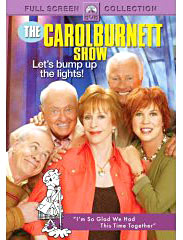 |
 |
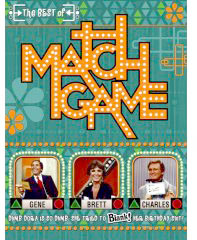 |
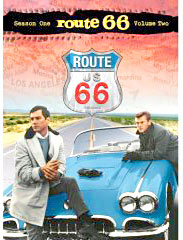 |
 |
||
|
||||||||||||||
 Contact Us / Survey TV Blog |
 |